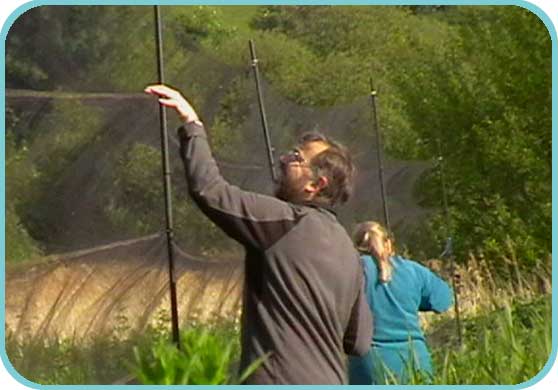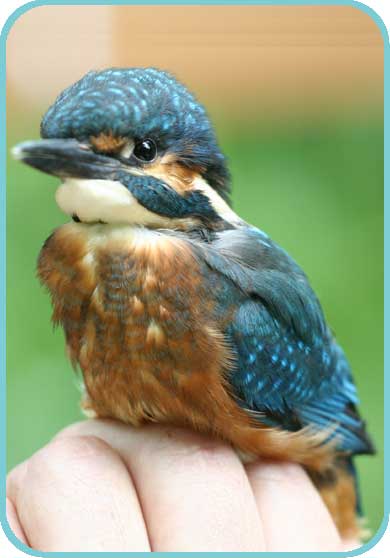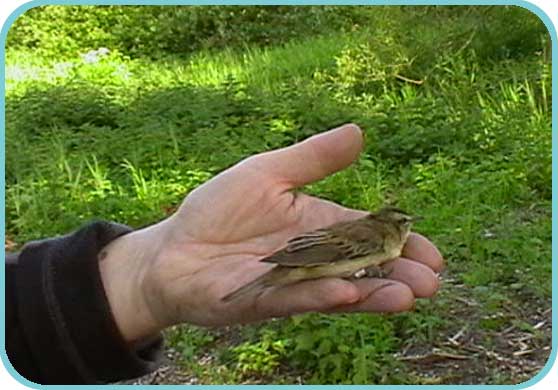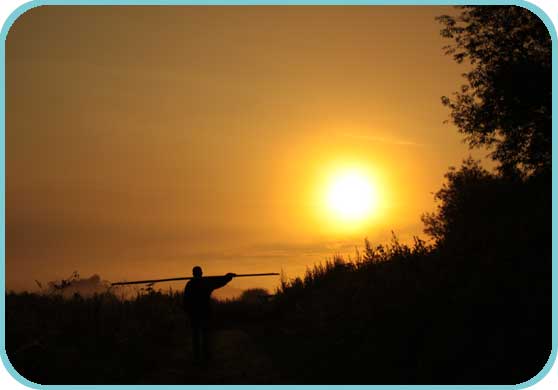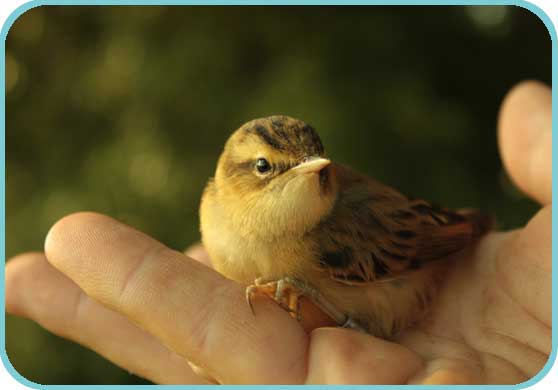Westbere Reserve - Bird Ringing
The main object of bird ringing schemes is to monitor our ever-changing bird populations. It is particularly useful for determining how many young birds leave the nest and survive to adulthood, and how well the birds survive migration and severe weather. This is so important for conservation, providing information on population size, breeding success and survival rates.
Some birds at Westbere are ringed as chicks in the nest, where their precise age and origin are known. Adults are usually are caught with mist nets; the fine mesh a few metres high, erected between poles is very effective for birds in flight. They are safely removed by experienced volunteer ringers from the British Trust for Ornithology who maintain a constant effort at our Westbere site. Captured birds are fitted with a small numbered ring on their leg and their details, such as species, age, sex, measurements, condition and the location recorded.
On average only one in every 50 birds ringed are subsequently found and reported, so the ring returns for Westbere are particularly pleasing.
Up until 2005 the ringing area included a Constant Effort Site close to the Boot Lake but ringing ceased because the catch rate significantly declined. The habitat had changed due to natural succession, reedbeds dried out and scrub willow established, and as a result reed dwelling birds gave way to woodland species. However, as the canopy developed still further, there was a general decrease in the numbers caught.
Under the Wild Spaces Fund's carefully managed stewardship, the reedbeds and their inhabitants are expected to flourish, and bird ringing on the CES will restart.
Ringing was carried out on twelve occasions during 2011, three at the
Railway site in April and May, and nine at the Reedbed site during the
summer. For details see ring returns.
Latest News:
Visits during 2011 produced 27 species totalling 708 birds - 29 were
retraps (ie birds ringed at the site on earlier visits).
The catch included 207 Sedge Warblers and 186 Reed Warbler; species that
ares doing very well at the ever improving site.
Wildlife photos: Simon Tardivel & Toby
Wheeler

